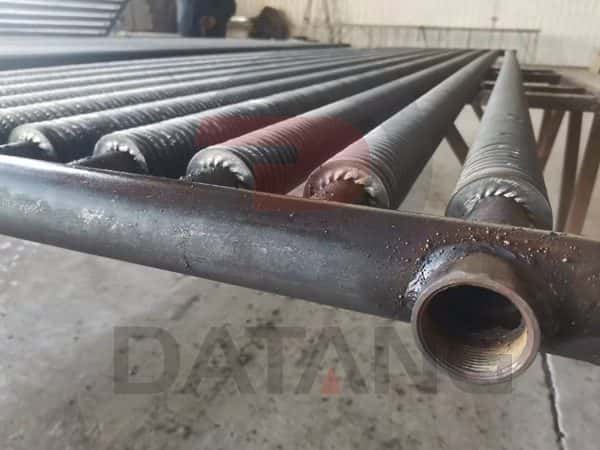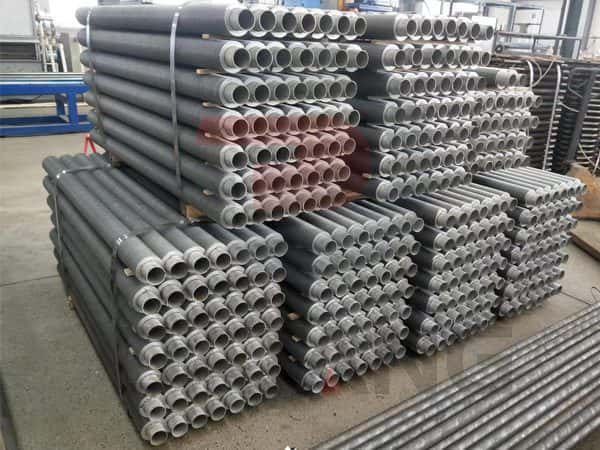The finned tube heat exchanger achieves the purpose of enhancing heat transfer coefficient by adding fins to the ordinary base fin tubes, and can have a heating effect.
When heating is required, it can use high-temperature water, steam or high-temperature heat transfer oil to heat the air. When cooling is required, low-temperature water (such as chilled water) can be used to cool the air.
Fin tubes heat exchangers are very popular in the industry and are widely used by enterprises.

What should be paid attention to when choosing a finned heat exchanger?
Murphy will give you some suggestions. Of course, the specific matters depend on the specific situation and are for reference only. If the requirements for thermal performance are relatively high, a higher heat transfer rate value should be selected.
The higher the value, the better the heat dissipation performance; if economic issues are taken into consideration, we can choose less metal consumption, which can reduce costs.
If you need more sanitation, we can choose a smooth surface and easy to clean; in terms of service life, finned heat exchanger can choose metal, which is not easy to be corroded and damaged.
The service life is longer; then, we must also pay attention to protection during use to extend its use time and bring more convenience to our lives.
How to increase the heat transfer capacity of the heat exchanger
Finned tube heat exchangers are still shoulder-arm heat exchangers to some extent. The main feature of the surface is that it has an extended heat transfer surface area.
Therefore, the process is not only a one-time transfer. On the hot surface, but also on the secondary heat transfer surface area.
In addition to pouring the heat of the medium fluid on the high temperature side into the medium on the low temperature side, part of the heat is also transferred along the height of the fin surface, that is, along the height of the fin.
It is a partition that pours heat into, and then the heat is transferred to the low temperature side by convection.

The application of fin tube heat exchangers
Today, Murphy team introduced you a heat exchanger, which is widely used in various fields such as textile, printing and dyeing, petroleum, chemical industry, electric power and so on, namely finned tube heat exchanger.
Maintenance method of finned tube
1. Regularly check whether the cleaning of each fin tube is completed, whether there are deposits, coking, scale, etc., and clean it immediately.
2. When you need to replace the rubber gasket or repair the degummed parts, you need to remove the fin tubes, put it on the table, remove the old gasket, or use fine sandpaper to polish the glue marks in the groove of the fin tube.
3. Every time you re-tighten the fin tube, pay attention to the position of the scale during the last tightening, and do not over tighten the rubber gasket, which may reduce the service life of the gasket.
4. When replacing the rubber gasket of the fin tube, all parts must be updated to avoid uneven gaps between the fins and affect the heat transfer effect.
